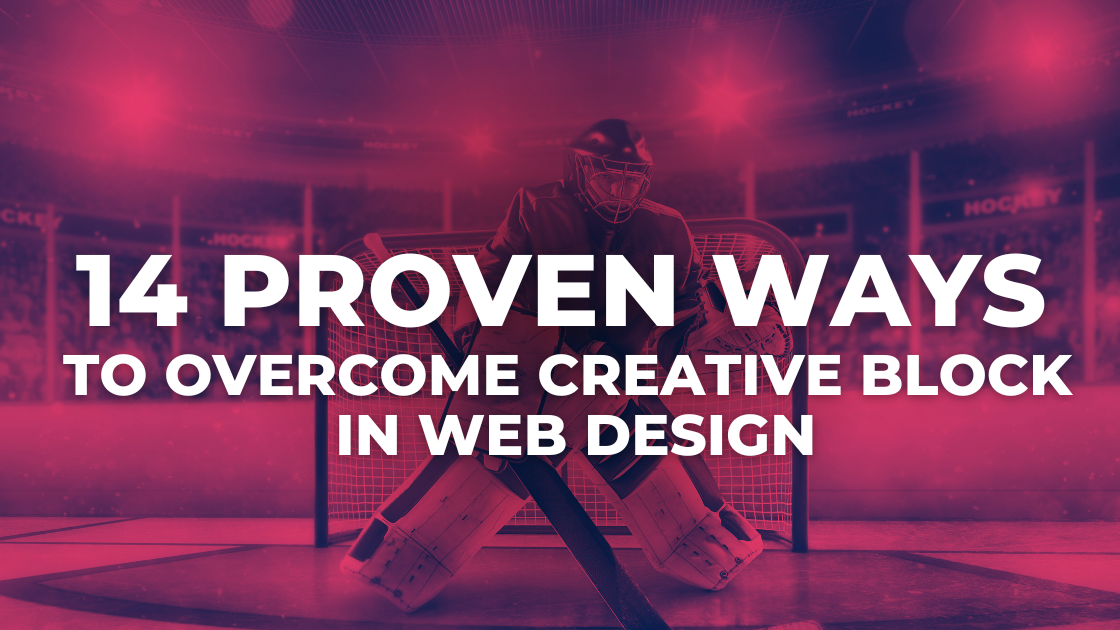Creative block is a formidable hurdle that confronts designers, writers, and artists across various creative endeavors. When struck by this exasperating phenomenon, it feels like a mental impasse, leaving one lost in a desert of ideas, gazing at an empty canvas devoid of any inspiration. Yet, amidst the frustration, it is vital to acknowledge that creative block is a transient challenge, a mere roadblock on the path to artistic greatness, and it can undoubtedly be vanquished with the application of the right approach.
To overcome creative block in the realm of design, whether embarking on a new website project for a valued client or crafting a personal masterpiece, consider implementing some effective strategies. First and foremost, embrace the art of mindfulness. Allow yourself to break free from the confines of self-doubt and external pressures, and instead, center your focus on the present moment. Cultivate a meditative state where your thoughts can flow freely and harmoniously, paving the way for novel and ingenious ideas to surface.
1. Embrace the Discovery Phase
Before starting any website design project, dedicate ample time to the discovery phase. Research your client’s business, target audience, competitors, and industry trends. This in-depth analysis will provide you with a solid foundation and help trigger ideas for the design process.
2. Define Clear Objectives
Having a clear set of objectives is essential to guide your design decisions. Work closely with your client to understand their goals and expectations. Ask questions to uncover the message they want to convey through their website. Clarity on objectives will serve as a compass during the design journey.
3. Gather Design Inspiration
Inspiration can strike from the most unexpected places. Browse through design portfolios, visit design galleries, and explore various websites to gather inspiration. Keep a mood board or folder to save visual elements, color palettes, and design styles that catch your eye.
4. Brainstorm with Colleagues
Collaboration can be a powerful tool to break through creative block. Discuss your ideas with fellow designers, team members, or even friends from different creative fields. They might offer fresh perspectives and help you refine your concepts.
5. Take Breaks and Refuel
Designing is an intense process that can drain your creative energy. Remember to take short breaks to refuel your mind and prevent burnout. Go for a walk, meditate, or engage in activities that relax and recharge you. Sometimes stepping away from the project for a while can lead to breakthrough ideas.
6. Sketch and Doodle Freely
When starting a new design project, allow yourself to explore different ideas through sketches and doodles. Don’t worry about perfection at this stage; the goal is to generate a variety of concepts. You might stumble upon a gem hidden in those rough sketches.
7. Experiment with Prototyping
Prototyping tools are a designer’s best friend. Create interactive prototypes of your design concepts to visualize how they’ll function in the real world. This hands-on approach can spark creativity and help you refine your design elements effectively.
8. Break Down the Design Process
The thought of tackling an entire website design at once can be overwhelming. Break down the project into smaller tasks and focus on one section at a time. By doing so, you’ll manage the workload better and avoid feeling stuck.
9. Find Inspiration Beyond the Screen
Creativity doesn’t have to be confined to your computer screen. Seek inspiration from the world around you – nature, architecture, art, and everyday objects can all offer unique ideas for your design project.
10. Don’t Fear Iteration
Creativity is an iterative process. Don’t be afraid to make changes and refine your designs. Sometimes the best ideas emerge from multiple iterations and improvements.
11. Revisit Past Projects
Take a trip down memory lane and revisit your past successful projects. Reflect on what made them stand out and how you can incorporate those elements into your current design.
12. Step Out of Your Comfort Zone
Challenge yourself to try new design styles or techniques. Stepping out of your comfort zone can lead to exciting breakthroughs and innovative designs.
13. Get Feedback Early and Often
Don’t wait until the end of the project to seek feedback. Share your initial design concepts with your client or team to gather constructive input. Early feedback can save time and prevent major revisions later on.
14. Trust the Process
Creative block can be frustrating, but trust in your abilities and the design process. Embrace the challenges as opportunities for growth and learning.
Overcome…
Overcoming creative block is an essential skill for any designer, and by following these strategies, you’ll be better equipped to start a new website design for a client project with confidence and creativity. Remember to immerse yourself in the discovery phase, set clear objectives, seek inspiration, collaborate, and embrace the iterative nature of the design process. By doing so, you’ll leave other websites behind and deliver remarkable designs that stand out in the competitive digital landscape.
So, the next time you find yourself facing creative block, take a deep breath, implement these tactics, and watch your creativity soar. With determination and a touch of inspiration, you can conquer any design challenge that comes your way.






0 Comments